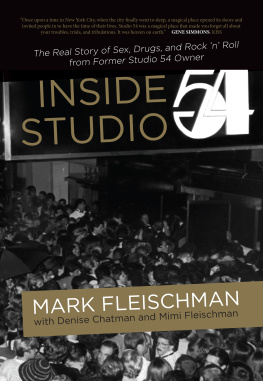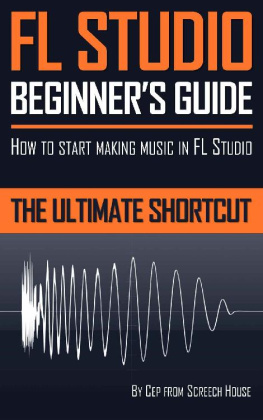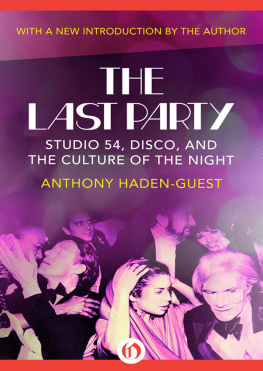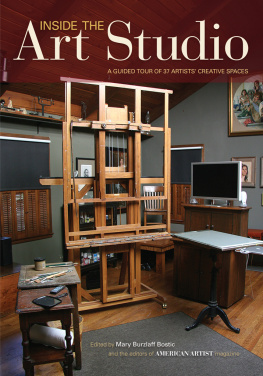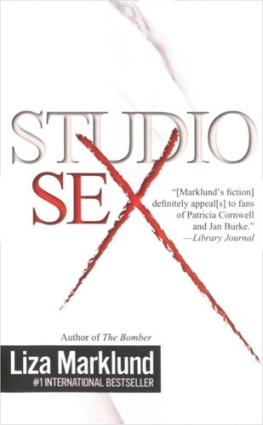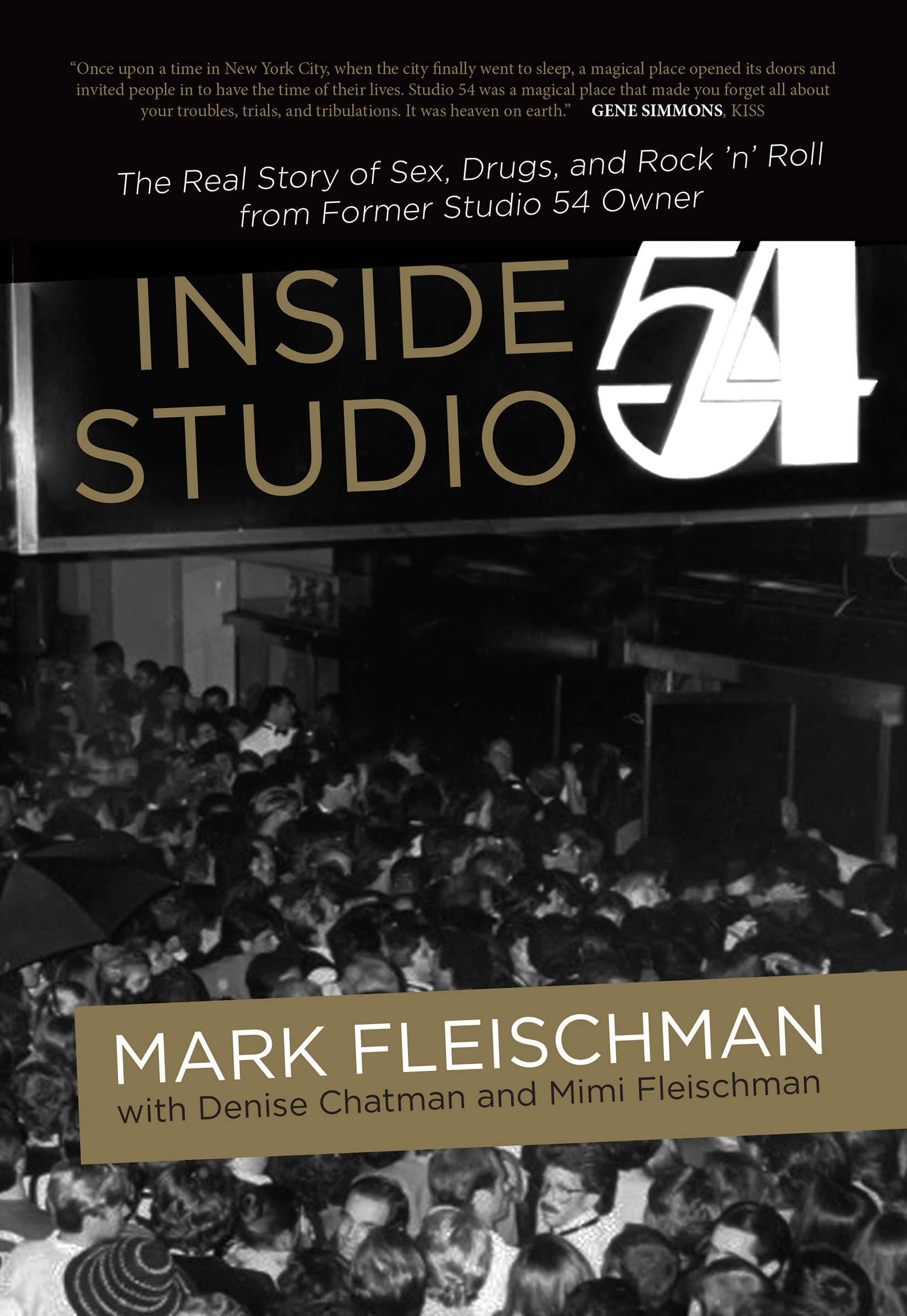This is a Genuine Vireo Book
A Vireo Book | Rare Bird Books
453 South Spring Street, Suite 302
Los Angeles, CA 90013
rarebirdbooks.com
Copyright 2017 by Bar Method of LA, LLC
All rights reserved, including the right to reproduce this book or portions thereof in any form whatsoever, including but not limited to print, audio, and electronic.
For more information, address:
A Vireo Book | Rare Bird Books Subsidiary Rights Department,
453 South Spring Street, Suite 302,
Los Angeles, CA 90013.
Cover Photography by Peter Gould
Set in Minion Pro
epub isbn : 9781947856004
Publishers Cataloging-in-Publication data
Names: Fleischman, Mark, author. | Chatman, Denise, author. | Fleischman, Mimi, author.
Title: Inside Studio 54 / Mark Fleischman ; with Denise Chatman and Mimi Fleischman.
Description: First Hardcover Edition | A Vireo Book | New York, NY; Los Angeles, CA:
Rare Bird Books, 2017.
Identifiers: ISBN 9781945572579
Subjects: LCSH Fleischman, Mark . | Studio 54 (Nightclub). | NightclubsNew York (State)New York. | NightlifeNew York (State)New YorkHistory20th century. | Popular cultureNew York (State)New York. | BISAC BIOGRAPHY & AUTOBIOGRAPHY / Entertainment & Performing Arts | BIOGRAPHY & AUTOBIOGRAPHY / Personal Memoirs | BIOGRAPHY & AUTOBIOGRAPHY / Rich & Famous
Classification: LCC F128.52 F55 2017 | DDC 792.7/09747/1dc23
Contents
Studio 54 Hits
the Virgin Isle Hotel
Roy Cohn Brings the Feds
to My Door
Introduction:
The Studio 54 Effect
I ve had a thing for clubs since childhood. Social clubs, officers clubs, nightclubs, and supper clubsI love them all. It started the night my parents took me to The Copacabana for the first time. I was ten years old and it colored my world forever. Looking back, everything that has happened in my life from that point onward propelled me on a trajectory toward Studio 54.
I became the owner of Studio 54 in 1980 and from the very first night we opened, in 1981, I was swept up in a world of celebrities, drugs, power, and sex. I was the ringleader for nearly four years and I became intoxicated with the scenebodies gyrating on the dance floor, sex in the balcony, and anything goes in the Ladies Lounge and Rubber Room. Every night, celebrities and stunning women made their way through the crowd, up the stairs to my office to sip champagne and share lines of cocaine using my golden straw or rolled up one-hundred-dollar bills. Nighttime can make you feel somehow protected, operating under a cloak of darkness. It alters your perception of right and wrong, sane and insane, in an arena far more cutthroat than the corporate world I had known before.
I was the guy in control, the ownerthe host of the party. It was my duty, my job, to make sure everyone had a good time. It was a responsibility, a heady feeling, one that I gave myself over to wholeheartedly. The legendary New York City nightclub was at the center of a strange bit of American history that touched a powerful nerve in our culture. It was an exclusive world where anything could happen. New Yorkers and visitors alike were desperate to get inside and be a part of it. Studio 54 was part of a journey that I was meant to take and one that nearly killed me.
After a long battle with the State Liquor Authority, I reopened Studio 54 in September of 1981. That night, ten thousand people stormed the main entrance in a near riot and the police were forced to close the block to traffic. Celebrities like Mary Tyler Moore and others were unintentionally turned away while Ryan ONeal, John Belushi, and Jack Nicholson managed to slip in through the back door.
Did I think about how this might impact my life or how it could change me and nearly destroy me? If I did, I dont remember. Nothing would have stopped me. I fell under the influence of Studio 54, along with many others, from owners, managers, competitors, bartenders, and DJs to lawyers, patrons, and friends.
My involvement with Studio 54 began years earlier, on the night I walked into its main room for the very first time. The heavy bass and the collective energy of so many bodies dancing as one drew me in. The crowd was hot and beautiful. Next to the dance floor, on a long silver banquette, several stars relaxed together passing around a joint as if at their own private party. I envied the original owners, Steve Rubell and Ian Schrager, for creating this pleasure palace. When I heard about them getting in trouble and then losing their liquor license, I made my move. My visits with Steve and Ian, at two different federal prisons, were orchestrated by their pit bull of an attorney, Roy Cohn, who was famous in his own right.
Articles have been written about Studio 54, but the behind the scenes story has never been toldthe 1998 film, , didnt come close. Mike Myers did an incredible job of playing Steve Rubell, but Ian Schrager was never mentioned. The film revolved around the life of a fictional bartender from New Jersey and had little to do with the story behind the club itself. I was invited to the premiere of 5, and at the after-party, I asked Miramax Films Harvey Weinstein why the film hadnt told a more accurate story. He answered, I just couldnt do it to my friend Ian. In 2012, Ian gave an interview on Sirius 54 radio claiming, The drug thing got blown way out of proportion and its kind of unfair. There were no more drugs going on at Studio 54 than there were going on at Yankee Stadium. The truth is, drugs were celebrated at Studio 54 from the very first night Steve and Ian opened the doors. A ten-foot-high neon prop known as the Man in the Moon dropped down from the ceiling, dominating the dance floor, scooping spoonfulls of cocaine up his nose throughout the evening. The beautiful Christmas gifts of cocaine in Ians possession during the raid at Studio 54 and the stories of basement parties all belie Ians assertion.
Nicholas Pileggis article Panic Hits Studio 54 ( The Village Voice, June 12, 1978) documented the widespread use of drugs at Studio 54.
Before opening Studio 54, Steve was unknown and his partner Ian was just another guy practicing real estate law. After the Studio 54 effect took hold of Steve, he changed. Columnist Liz Smith summed it up: Steve went crazy. Maybe it was all the Quaaludes and cocaine or some of the other stuff he was doing, but something caused a major lapse in judgment when he bragged to New York magazine , in the article written by Dan Dorfman, that he and Ian were making more money than the Mafia.
The New York magazine article put Studio 54 on the radar screen of the Internal Revenue Services Criminal Division. They took one look at Studio 54s tax return for 1977 and discovered they had paid a paltry $7,000. Game over. The Feds raided Studio 54 and it became clear that Steve and Ian were going down.
The effect of the raid on Studio 54 plagued Ian for years, but he was able to move on and create a stellar career as an hotelier. Steve wasnt as fortunate. The Studio 54 effect destroyed him, leading to his untimely death at age forty-five. It almost destroyed me as well. I didnt want the party to ever end. I could have headed home at four or five each morning when we closed the doors to the club, but I didnt. Night after night Id jump in my limo and hit the after-hours clubs, or Id remain at Studio 54 and hang out with a crowd of VIP regulars, actors, and an assortment of hangers-on looking for cocaine. With complimentary drinks flowing and an exotic assortment of drugs to please my guests, wed sit around my office sharing our personal stories. Then, around 9:00 a.m. or so, rubbing our eyes, wed walk out of the dark, cavernous space into the bright morning light. And while other people rushed up and down Broadway on their way to work at the start of a brand new day, we headed home from the night before.

